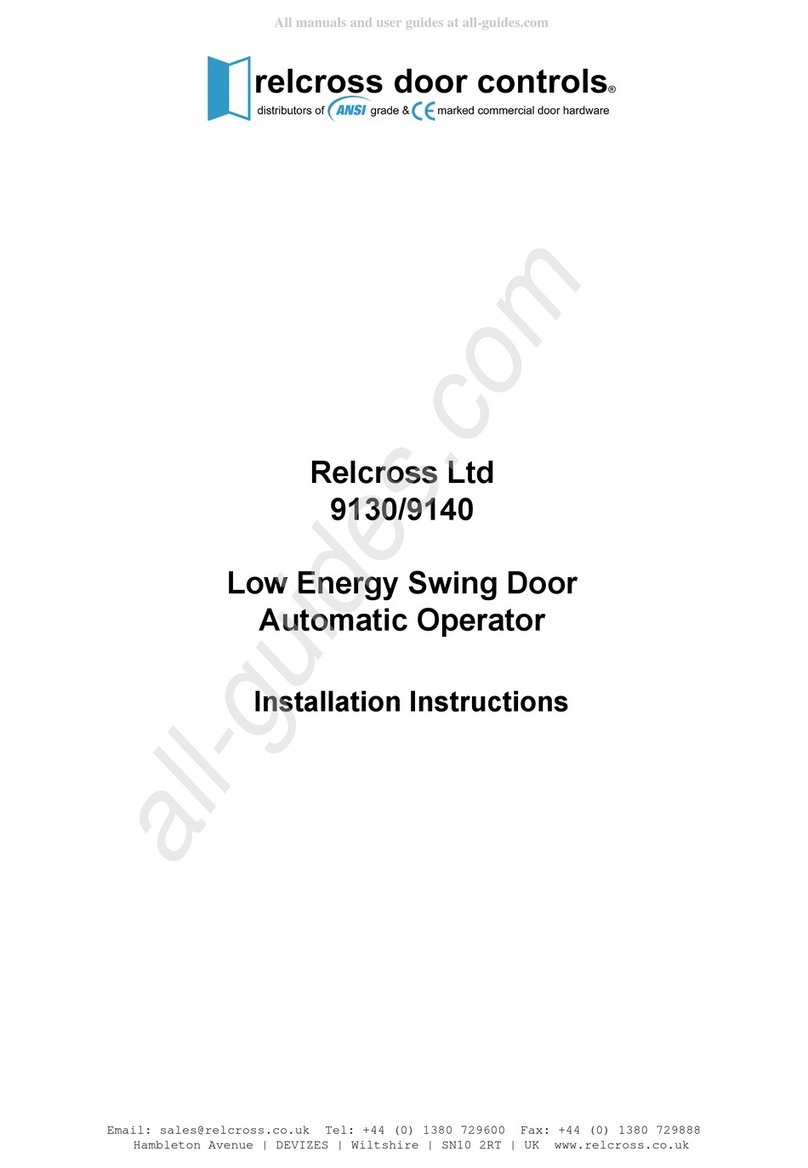
If the encoder is connected in the opposite direction, disconnected or
faulty the door will operate erratically (continuously opening halfway,
closing, latching and reopening etc.). This will continue until power is
switched off and problem rectified.
6.1 SETTING FUNCTION
6.1.1 From the FUNCTION SELECTOR switch to one of the 6 standard
program settings depending on the desired fire alarm position AND
monitored safety requirement (see FUNCTION table on page 11). If
no safety devices are to be used then only the fire alarm position is
critical.
6.1.2 For function 0, 3 & 6 (i.e. fail safe to open position) Fire Alarm input
operates the door and it remains in the open position for as long as
the contact is made.
6.1.3 For function 1, 4 & 7 (i.e. fail safe to closed position) Fire Alarm input
disables all activation allowing the door to close where it remains for
as long as the contact is made.
6.2 LEARNING CYCLE & SET UP (no safety sensors)
6.2.1 From start-up, the door will activate from either T9 & T10 (Fire Alarm)
or T27 & T28 (One Way). Activate the operator using the activation
device - the operator will perform one learning cycle. During the
learning cycle, the door opens and closes one time.
6.2.2 The speed of the learning cycle is adjusted automatically to
compensate for the door weight and is not set from a potentiometer.
6.2.3 The door drives to the fully open position where the control box sets
the parameters to the fully open setting (NB - remember to install
drive arm when door is in the open position).
6.2.4 When the door reaches the fully open position the control box
automatically sets the power required to keep the door open until
activation and/or timer is cleared
6.2.5 The door closes at the designated close speed (P6) up to latch
position (P5) where the speed is decreased automatically by the
control box allowing the door to close smoothly until fully closed.
6.2.6 If the door does not open at all during learning cycle:
- Check the door for binding.




























